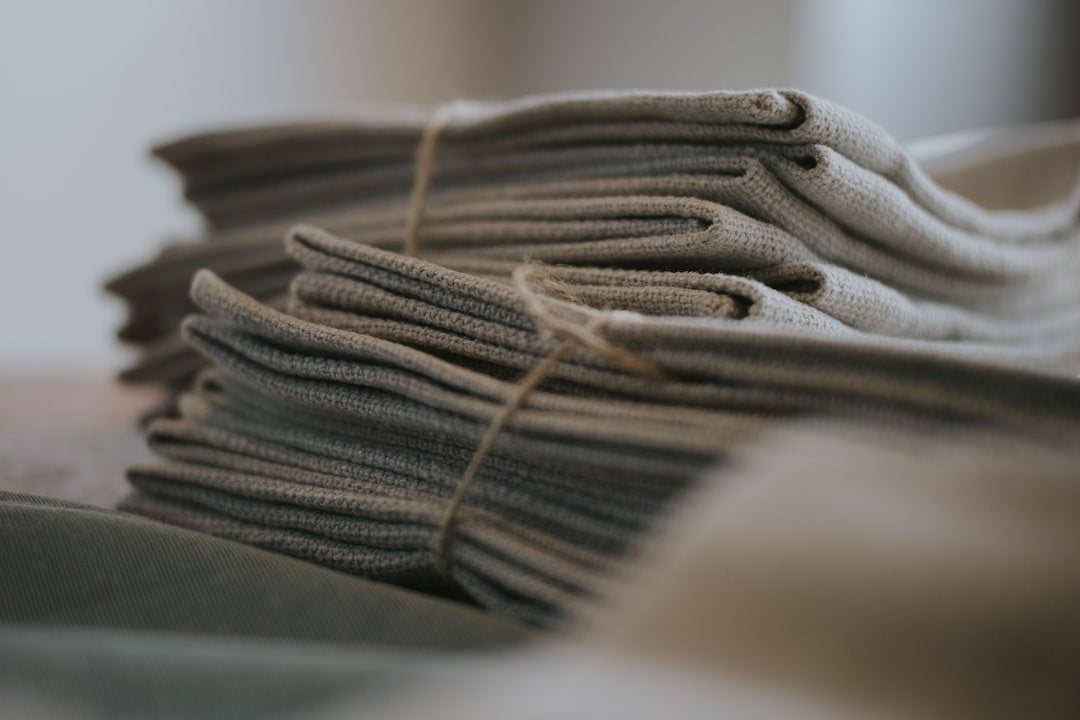

Do you want to know why natural fibre fabrics are all the rage currently?
Then, keep reading, because this blog digs deep into all you need to know.
Demand for natural fibres is on the rise. Is this a fleeting moment for the fashion and textile industry? Or is there something more profound driving this change in buying behavior?
The reality is that the textile industry has always been at the forefront of innovation.
Natural fibre fabric is more than a trend. They are exciting and important reasons why they are becoming increasingly popular with makers and the buying public.
Read on to learn more about what's happening in the industry and why natural fibres are the best choice for your needs.
Traditional Textiles: A Brief History
Synthetic fabrics are a feature of a modern, mass-produced textile industry. But there was a time before that when natural fibre materials were central to textile producers.
Silk weaving is an ancient tradition in China.
India offered the world cotton looms.
Flax came from Egypt.
These advanced societies produced beautiful textiles using a wide variety of natural materials. Experts passed these techniques on to the generations that followed.
Perhaps that's why antique and historical textile crafts are still sought after today, even in the era of high-tech machines.
They represent cultures and specialist skills, not to mention the beauty and intricate designs many of these textiles offer the world.
Synthetic Fabrics: A Diminishing Demand?
Synthetic fabrics have become increasingly popular. Advances in manufacturing processes and technology mean fabric production is faster and cheaper. It's possible to produce a synthetic material that's low-cost and durable.
It can even mimic the appearance of its natural counterpart. It's why we can access clothes and homeware fabrics at such a low cost nowadays.
So, with all those advantages, why are consumers and some manufacturers starting to shun synthetics?
Most of the answers to that question point to environmental concerns. That's where the synthetic textile industry has a weak point. They come with more pollution during the manufacturing process and waste.
Cheap textile is more readily discarded into landfill. Much synthetic fibre is non-biodegradable, leaving Earth with a lasting impact on something that consumers may have only used for a few months.
There is also a growing concern about the risks of microplastics. These are tiny particles of plastic that can enter waterways, causing damage to marine life.
A More Sustainable Future: Natural Fibres
When it comes to sustainability, synthetic fibres can't match the eco-friendly qualities of natural fibres like cotton, silk, hemp, and wool.
First, they don't use petroleum. So, they aren't sourcing from a fossil fuel that's non-renewable and harmful to the environment. Natural fibres come from plants and animals and always offer a smaller carbon footprint.
When considering the impact and risks of global warming, that's a significant advantage.
Natural fibres are also biodegradable. So they don't linger in the environment for hundreds of years, blotting the landscape with mountains of discarded clothes.
When these fibres decompose, they return to the soil, and their composition means they can even enrich the soil. So, they create a more cyclical production that doesn't do long-term harm to the environment.
During the farming phase of sourcing natural fibres, there is also much that farmers can do to make the process environmentally friendly. That can include crop rotation and organic farming practices, for example.
The Health Benefits of Natural Fibres
It's not just the environment driving a demand for natural fibres. It's also apparent that synthetic materials don't always match our skin's gentle and delicate nature.
Natural fibres have health and wellness advantages.
Cotton, silk, and linen are fibres that you'll often see recommended if you suffer from a skin condition like eczema.
That's because organic apparel is more compatible with our bodies. It allows our skin to breathe and reduces the risk of irritation.
They naturally help the body's temperature to adjust. It works whether that's a cool, breezy cotton on a hot day or a warm, snug wool sweater in winter.
The breathability means the skin doesn't build up as much sweat and bacteria, which can worsen skin conditions. The lack of chemicals means these fibres are also safe for those with allergies.
It's why you'll need natural textiles in clothing labeled as hypoallergenic. It's notably crucial for babies who have highly sensitive skin. More parents are turning to clothes made from natural and organic cotton and similar fabrics.
Innovations in Production Methods for Natural Fibres
Mass production once gave us synthetic fabrics. Likewise, modern production methods are also helping to transform the natural fibre industry.
Take bioengineering, for example. This movement is helping to improve crop yields for things like cotton and flax.
These types of developments mean future natural fibres will be cheaper to source. It also offers environmental advantages. It means less water and pesticide use when growing these crops.
Manufacturers are also finding ways to improve the durability of natural fibres. For example, you can now treat wool fibres to make them machine-washable.
Some manufacturers are also experimenting with new raw materials for fibres. One such example is banana plants. It offers more eco-friendly sourcing and a better variety of textiles.
The Beauty Aspect of Natural Fibers
Sustainability and health matters might be the driving force behind natural fibres. But there is another reason why textile makers and the fashion industry adore these fibres. They look beautiful.
Part of this derives from their history. If you have natural textiles in your home or wear a garment made from organic cotton, it looks classic. It appears timeless. It could have been made yesterday or many years ago.
Organic fabric has a luxurious feel and appearance that's hard for synthetics to replicate. It's why premium suits will always say 100% wool, as it's the go-to choice for those looking for a high-end outfit.
The soft, flowing nature of silk on the skin is almost impossible to replicate, even with the most modern synthetics.
Natural Fibre Fabric: The Premium and Eco-Friendly Choice
Don't allow the temptation of a low-cost synthetic fibre to get in the way of seeing the beauty of its natural rival. Natural fibre fabric is safe and sustainable.
And it looks luxurious.
Kwaint Threads has the highest quality, ethically sourced organic fabric available.
Shop our selection here.
